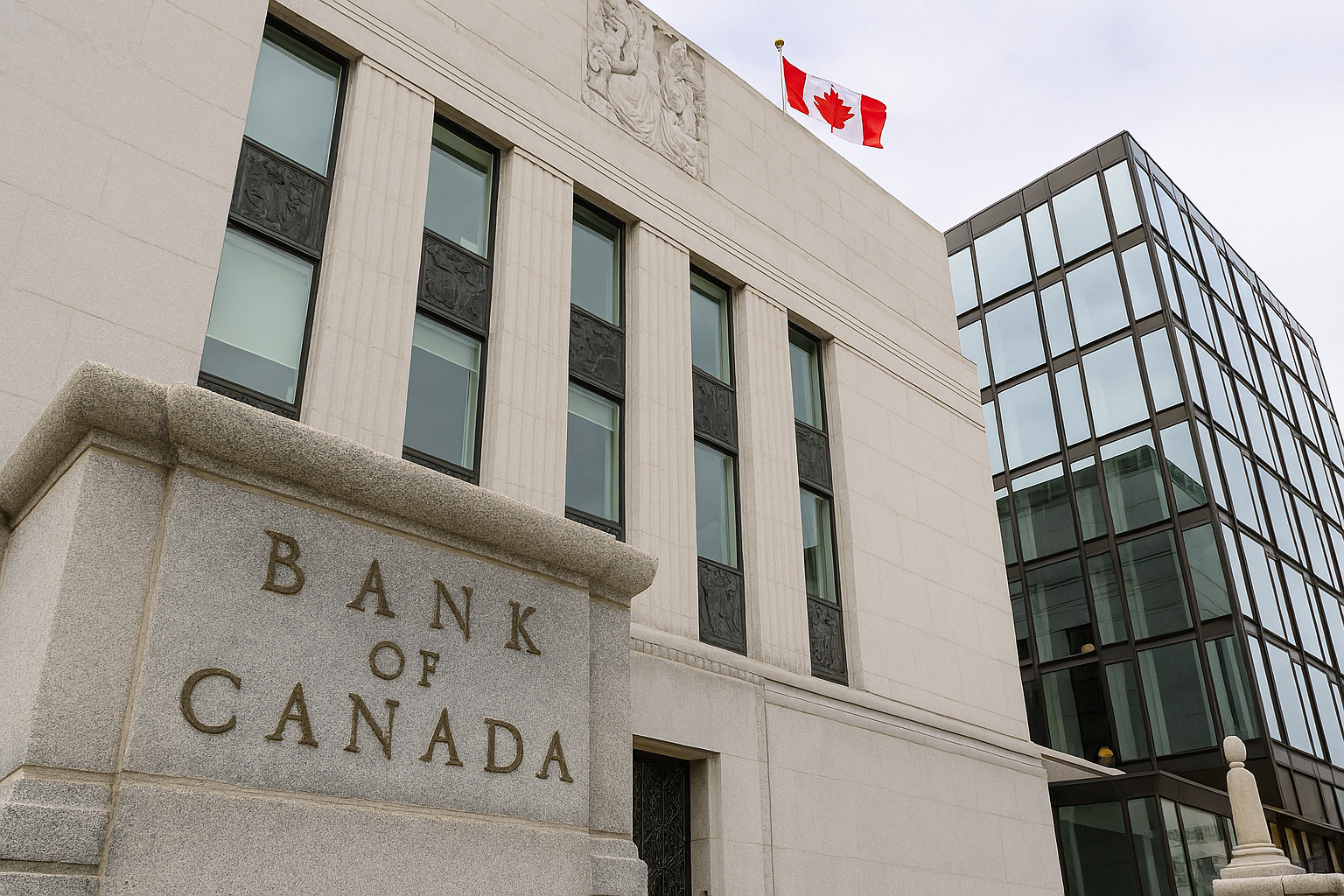The Inflation Conundrum: Below Target, But Is it Sustainable? 🎯
The latest inflation numbers are a headline-grabber, with Canada's CPI at 1.7% as of July 2025. This is well below the Bank's 2% target. However, the Bank's Governing Council is likely to look past the headline figure and focus on the underlying pressures. The moderation in inflation is largely due to the temporary effect of the carbon tax removal and a continued decline in gasoline prices. If you strip out volatile items like food and energy, core inflation is still a concern. This presents a dilemma for policymakers: while the headline number looks great, the persistence of underlying price pressures hasn't fully dissipated, particularly with high shelter costs.
A Mixed Bag of Economic Signals 📉⬆️
The broader economic picture is a mixed bag, which strongly supports a cautious, wait-and-see approach.
GDP Contraction: The most recent data from the Canadian Federation of Independent Business (CFIB) suggests a significant contraction, with Canada's GDP growth rate estimated to have fallen by -0.8% in the second quarter of 2025. This indicates a slowing economy that would typically call for a rate cut to stimulate growth.
Weak Labor Market: Canada's unemployment rate is elevated at 6.9% as of July 2025. The latest job numbers showed a significant loss of full-time positions, indicating building slack in the labor market.
A Softening Housing Market: The Teranet-National Bank Composite House Price Index confirms that the housing market continues to soften, with prices down for a sixth consecutive month in July, falling -0.8% m/m. This is a direct result of higher borrowing costs and has a dampening effect on economic activity.
External Pressures and the US Fed 🇺🇸
The Bank of Canada cannot act in a vacuum. The US economy and monetary policy are key factors. The US Fed Funds Rate currently sits at 4.33%, with the US Inflation (CPI) at 2.4%. The Bank of Canada must consider the potential for capital flight and the impact on the USD/CAD exchange rate if its policy diverges too sharply from the US Federal Reserve. A significant rate cut in Canada while the Fed holds steady could weaken the loonie, making imports more expensive and potentially fueling inflation down the line.
MARKET RATES
US 10Y Treasury Yield: 4.29% (as of Aug 20, 2025)
10YT Minus 2YT Spread: 0.48% (as of June 20, 2025)
US 30-Year Fixed-Rate: 6.90%
US Prime Rate: 7.50%
Canada Prime Rate: 4.95%
US Fed Funds Rate: 4.33% (Effective Federal Funds Rate, as of Aug 19, 2025)
Policy Interest Rate - Bank of Canada: 2.75% (as of July 30, 2025)
SOFR: 4.28% (as of March 1, 2025)
US Inflation (CPI): 2.4% (as of May 2025)
CA Inflation (CPI): 1.7% (as of July 2025)
USD/CAD Exchange Rate: $1 USD = $1.37 CAD
S&P 500: 6,025.04
Gold: $3,376.02 USD/t.oz (Canadian equivalent: $4,624.18 CAD/t.oz)
Lumber: $608.50 USD per 1,000 board feet
Crude (WTI): $69.70 USD/Bbl
Gasoline USD/Gal: $2.21 USD/Gal
Global Container Freight Index: 1,869.59 points
Bitcoin: $103,413 USD (Canadian equivalent: $144,348.07 CAD)
Ethereum: $2,307.45 USD (Canadian equivalent: $3,296.84 CAD)
Luxury Watch Index: $33,557 (Note: This is a composite. For specific brands: Rolex +45.31%, Patek Philippe +82.10% since January 2019)
CANADIAN ECONOMIC & REAL ESTATE INDICES
Canada GDP Growth Rate (Quarterly): -0.8% (Q2 2025 estimate)
Canada Unemployment Rate: 6.9% (July 2025)
Canada Household Debt-to-Income Ratio: 174% (Q1 2025)
Canada Consumer Confidence Index (Conference Board of Canada): 52.9 points (May 2025, down 4.5 points)
Canada Housing Affordability Index (RBC Aggregate): 59.5% (Q2 2024, representing share of median household income needed to cover homeownership costs)
Canada Rental Vacancy Rate: 3% (2025 forecast, CMHC data)
Teranet-National Bank Composite House Price Index (Canada): 311.02 (July 2025, -0.8% m/m)
Canadian Home Builders' Association (CHBA) Housing Market Index (HMI) - Single-Family: 26.4 (Q1 2025 - builder confidence, 0-100 scale, below 50 indicates more builders rate conditions as "poor")
Canadian Home Builders' Association (CHBA) Housing Market Index (HMI) - Multi-Family: 22.3 (Q1 2025 - builder confidence)
The Verdict: A Cautious Hold 🤝
Given the conflicting signals, the most likely outcome is that the Bank of Canada will opt for a rate hold on September 17th. While the weak GDP and elevated unemployment rate argue for a cut, the persistent underlying inflation and the need to maintain some alignment with US monetary policy are likely to give policymakers pause. A hold allows the Bank to assess the full impact of these variables and avoid a premature move that could jeopardize their progress on inflation. A hold is a message of "stay the course", allowing them to gather more data and make a more informed decision at a later meeting, possibly in October or December.




